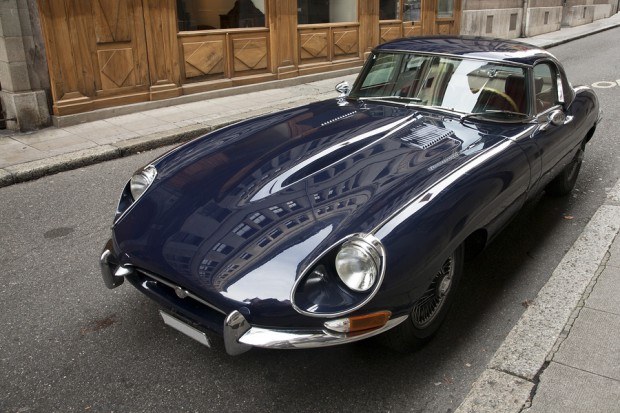In the 1930s, British sports-car maker MG made exactly 33 of the K3 open-top race car. If you want to buy one now, there are more than 100 to choose from.
No, the defunct carmaker didn’t restart production. The tripling of the K3 fleet is part of the booming trade in fake antique autos as soaring prices for classic cars spur sophisticated counterfeits, according to Bernhard Kaluza, vice president of international antique auto club FIVA.
“In the 1990s, I would find one faked car every five years,” said Norbert Schroeder, who verifies classic cars at TÜV Rheinland, a Cologne, Germany-based technical testing company. “Now I find up to five fakes a year.”
Vintage cars have gained in appeal, especially since the financial crunch. Auction values have risen more than sevenfold over the past decade, according to data from market tracker Historica Selecta. British auction house Bonhams, which says global sales total more than $1 billion a year, sold a 1954 Mercedes-Benz F1 car for 19.6 million pounds ($32.1 million) in July, setting a world record at auction.
The lure of antique autos is evident in the case of a 1955 Aston Martin DB2/4. Bonhams sold the exact same car in unchanged condition for 230,000 pounds in 2011, more than four times the price paid in 2003, said James Knight, the head of auction house’s motoring department.
Porsche 904
Demand remains high. At a Dec. 1 auction, Bonhams, which performs numerous checks before accepting a vehicle for auction, sold dozens of vintage autos, including a 1964 Porsche 904 GTS racing coupe for 1.15 million pounds.
“People with a lot of money prefer to have a classic car in the garage than money in the bank,” said Adolfo Orsi, president of Historica Selecta, a consulting company that specializes in classic cars. “When there is a lot of money, there are fakes. In today’s world, it is possible to replicate everything.”
Sophisticated forgers have been known to buy up old screws and washers, leave reproduced frames in fields to weather and even have parts copied to make fakes harder to detect. FIVA’s Kaluza says counterfeiters even bought an old movie theater in France to get the worn antique leather from the seats.
Organized Crime
“The people faking cars are not a few lone wolves,” said TÜV’s Schroeder, who has traveled as far as California to authenticate cars, including evaluating welding joints and chemically testing the metal to determine its age. “It’s organized crime because it’s expensive to build such cars and you need a good infrastructure to do it.”
Christian Jenny has confronted the risks. The former chief information officer of Zurich Insurance Group AG spent five years proving his rare 1952 Jaguar C-Type convertible was authentic, after another model showed up on the market claiming to have the same identification number.
The owner of 13 vintage Jaguars consulted numerous experts, including Norman Dewis, chief test engineer for the British luxury brand for more than 30 years. With the car valued at about $2.5 million, there was a lot at stake.
“It might be a problem if you tried to sell the car years later,” said Jenny, who is now retired and lives in Thalwil, Switzerland. Verifying the car was “a precautionary measure.”
Authenticating cars isn’t easy. Simon Kidston, a classic- car consultant in Geneva, was offered an Alfa Romeo Giulia TZ racer from the 1960s from a seller who claimed to have discovered the car in a scrapyard in northern Italy.
Fiery Crash
After consulting numerous sources, Kidston eventually discovered a photo of a car with the same identification number that was involved in a fiery crash at the Sebring race in 1964. The driver only barely escaped.
“It was clear there could be nothing left of the original car,” said Kidston, who rejected the offer.
Other frauds are more subtle, like taking an authentic vintage Porsche 911 and turning it into a high-performance 911 RS version, which would effectively quadruple the car’s value. Others take authentic parts and build a vehicle around them, making the line between refurbished and forged models murky.
“There are plenty of adapted cars,” said Bonhams’ Knight. “Fake has another meaning: it’s trying to deceive.”
There are also legitimate copies of classic cars, which don’t try to fool buyers.
Not Evil
“The replica game isn’t evil,” said Martin Emmison, a lawyer at Goodman Derrick LLP in London, who advised Jenny and drives a Jaguar C-Type look-a-like. “It gives people like me who can’t afford a real C-Type a chance to drive the machine almost exactly how they were.”
The extent of classic-car fraud is difficult to track since few victims come forward, and it’s still considered relatively rare. Still, to prevent the threat of counterfeits from discrediting the whole market, FIVA has created a passport for antique cars to improve transparency.
“The whole problem of faked classic cars is being treated warily,” because people in the market “don’t want to ruin the good mood,” said TÜV’s Schroeder. “I want to speak out on this before the whole thing blows up.”
–Editors: Chris Reiter, Chad Thomas





















 Why the Middle Market Matters and How Insurers Can Capture It
Why the Middle Market Matters and How Insurers Can Capture It  How Insurers Can Avoid Post-Merger Technology Failure
How Insurers Can Avoid Post-Merger Technology Failure  Five AI Trends Reshaping Insurance in 2026
Five AI Trends Reshaping Insurance in 2026  Insurance Costs, Climate Concerns Factor Heavily in U.S. Home Buying Decisions
Insurance Costs, Climate Concerns Factor Heavily in U.S. Home Buying Decisions 





